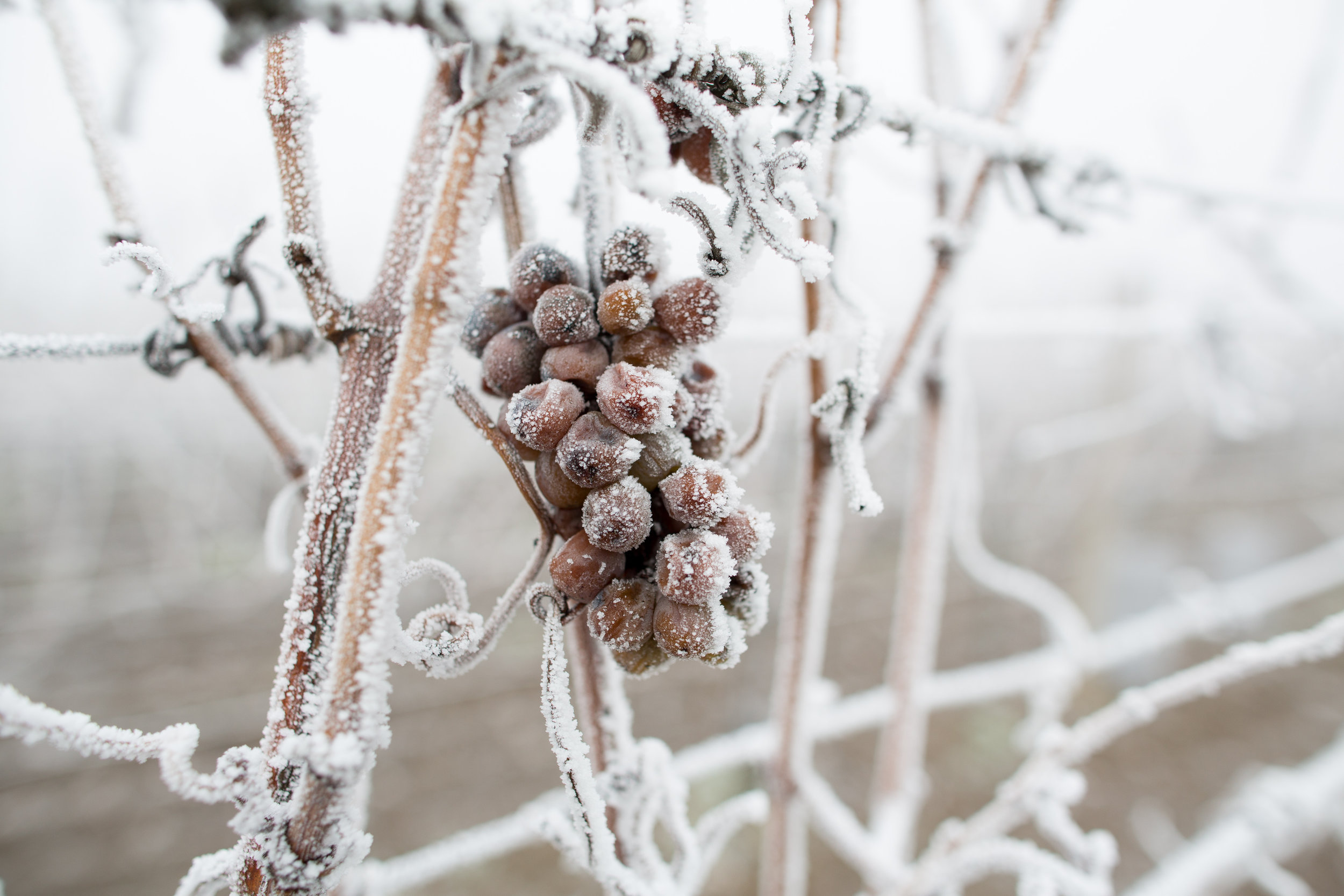Sweet Wine Production
All other things being equal, the process of alcoholic fermentation will naturally create a dry wine, as the yeast will consume all the grape sugar. This is what happens for most table wines. As a majority of consumers prefer the taste of dry wine, this is how most of the world’s wine is made. Most of the fine wine consumed in yachting is dry, though sweet wines have their place too, with the wines of Sauternes and Tokaji being the leading examples.
Though dry wines represent the majority, winemakers can also create sweet wines, and they have a number of tools at their disposal to do so. The choice of whether to produce a sweet wine - and the technique used - will depend on the winemaker’s preference, local growing conditions and local regulations.
Interrupting Fermentation
The winemaker can halt the fermentation through fortification, adding sulphur dioxide (SO2), or chilling the grape must.
Fortification is the addition of a neutral spirit during the fermentation, which kills the yeast and stops the fermentation process altogether. This has a considerable impact on the structure of the wine, in particular affecting sweetness and alcohol levels, both of which will be typically very high. The most prominent fortified wines are Port and Sherry, with other examples including Madeira, Marsala and French vins doux naturels.
Adding SO2 or chilling the must will effectively pause the fermentation, as opposed to stopping it permanently. Following this step, the wine must be filtered to remove any residual yeast. The resulting wine must be kept away from any yeast, or else the fermentation process will resume.
Addition of Sweetening Component
Winemakers can sweeten otherwise dry wines before bottling by the addition of unfermented grape juice or Rectified Concentrated Grape Must (RCGM), a sugar solution from grape juice extract. The former is particularly popular in Germany, where dry wines are made medium-sweet by adding unfermented grape juice known as Süssreserve. The addition of RCGM is most commonly associated with mass market New World wines, where adding a little sweetness appeals to broad consumer tastes. Some off-dry and medium sweet German wines are also made in this way. It is unlikely that you will encounter such wines in yachting.
Concentration of Grape Sugars
Grapes that have very high levels of natural sugar create the best sweet wines, as they have high levels of acidity to create balance alongside the sweetness.
Noble rot wines are those made from grapes affected by botrytis cinerea, notably the fine dessert wines of Sauternes and Tokaji. Beerenauslese and Trockenbeerenauslese wines from Germany and Austria are also made in this way. This technique produces the world’s finest and most sought-after sweet wines, including the iconic Château d’Yquem from Sauternes and top Tokaji Aszu and Tokaji Essencia from Hungary. These wines are capable of incredibly long ageing and can rival and even outdo fine red wines in this regard. Producing noble rot sweet wines is incredibly labour-intensive and costly, so the wines tend to be very expensive as a result. It is also a risky business, as the winemaker relies in large part on nature, which does not always behave as the winemaker might like. Taken to the extreme, this can cause the winemaker to lose an entire vintage, as was the case at Château d’Yquem in 2012. Aromas typically associated with noble rot wine include honey and dried fruits.
Passerillage, or drying grapes on the vine, is a technique where the ripened grapes are not picked and instead allowed to dry out and turn to raisins on the vine, leading to huge sugar concentration. Producers in Sauternes use this technique for a proportion of their fruit because, as mentioned above, noble rot cannot always be relied upon.
Drying grapes after picking is a technique used in the production of Pedro Ximénez Sherry and the passito wines of Italy. It is a prerequisite that conditions are dry and warm and that care is taken to remove any rotten grapes to prevent the spread of unwanted rot. After they are picked, the grapes are dehydrated which leads to great sugar concentration and wine with a raisiny flavour profile.
Freezing grapes on the vine is a technique used to produce Canadian Icewine and German Eiswein. Here, grapes are picked and pressed while frozen. The ice stays behind in the press and the resulting grape must is very high in sugar. This technique leads to wines with strong varietal characteristics.






